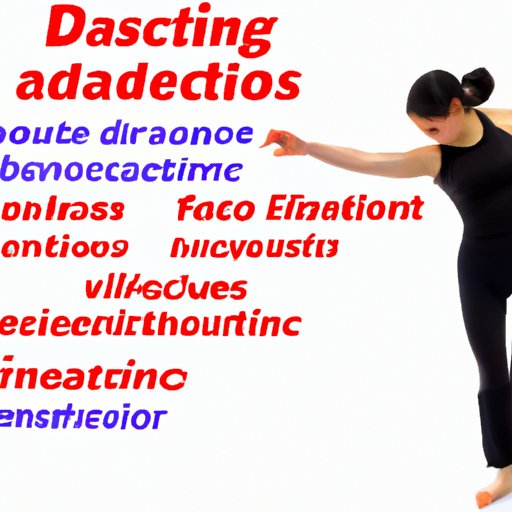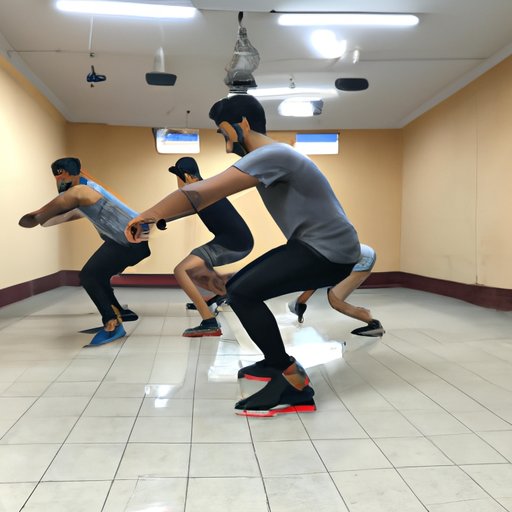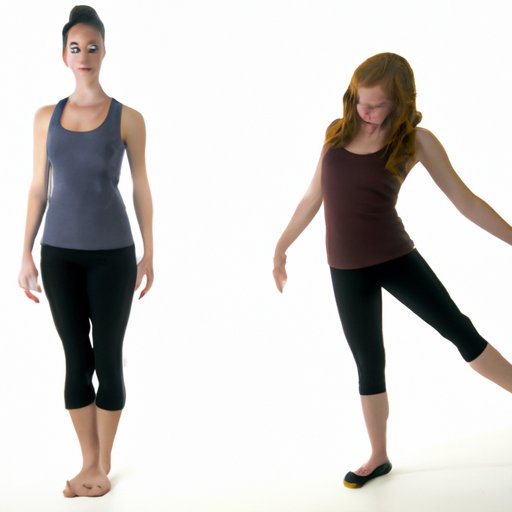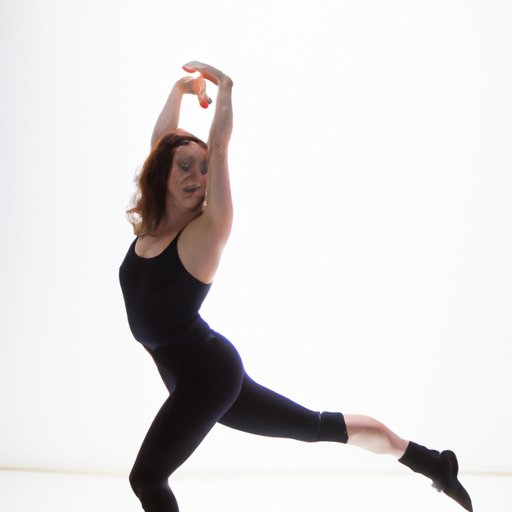Introduction
Exercise is essential for maintaining physical and mental health, and there are many types of exercise to choose from. One popular form of exercise is dancing, which can provide a fun and creative way to stay fit. Before engaging in any form of exercise, it is important to understand its benefits and risks. In this article, we explore the benefits of dancing as an exercise, different styles of dance for fitness, muscles used in dance workouts and common injuries associated with dancing. We also compare and contrast dance with other forms of exercise.

Analyzing the Benefits of Dancing as an Exercise
Dance is a form of physical activity that has been around since ancient times and is still widely practiced today. It can be performed alone or in groups and can be used for entertainment or exercise. Studies have shown that dancing can provide a range of physical and mental health benefits, making it an excellent form of exercise.
Increased Cardiovascular Health
One of the main benefits of dancing as an exercise is improved cardiovascular health. Regular dance can help to strengthen the heart and lungs, improve circulation and reduce blood pressure. It can also help to increase endurance and stamina, allowing you to work out for longer periods of time. Additionally, studies have shown that regular dancing can help to lower cholesterol levels, reducing the risk of heart disease.
Improved Balance and Coordination
Another benefit of dance as an exercise is improved balance and coordination. Dance requires the use of multiple muscle groups in order to execute the moves, which can help to improve coordination and balance. This can be especially beneficial for older adults who may be at risk of falls due to lack of balance and coordination. Additionally, dance can help to improve posture and flexibility, which can help to reduce the risk of injury.
Stress Relief
Finally, dancing can also provide stress relief. Moving and grooving to the beat of the music can help to elevate mood and reduce stress and anxiety. Additionally, the social aspect of dancing can help to increase self-esteem and confidence, providing further mental health benefits. Therefore, dancing can be an enjoyable and effective way to boost physical and mental wellbeing.

Exploring Different Styles of Dance for Fitness
There are many different styles of dance that can be used for exercise. Some of the most popular styles include ballet, jazz, tap, hip hop and Zumba. Each style has its own unique set of moves, which can offer different levels of intensity and challenge. Depending on your fitness goals and preferences, you can choose the style of dance that works best for you.
Ballet
Ballet is a classic style of dance that requires grace and poise. Ballet movements are often slow and graceful, focusing on control and precision. This style of dance can help to improve balance, flexibility and coordination, while also strengthening the core and legs. If you are looking for a low-impact workout that focuses on form and technique, then ballet may be the right choice for you.
Jazz
Jazz is a fast-paced and energetic style of dance that incorporates a variety of moves such as leaps, turns and kicks. Jazz dance is great for improving coordination and agility, while also providing a full-body workout. This style of dance is a good choice for those looking for a more intense workout that will get your heart pumping and burn calories.
Tap
Tap is a style of dance that involves using metal plates on the soles of the shoes to create rhythmic patterns. Tap dancing is a great way to improve coordination, rhythm and timing, while also providing a full-body workout. This style of dance is a fun and creative way to get moving and burn calories.
Hip Hop
Hip hop is a modern style of dance that combines elements of street dance, funk and jazz. Hip hop dance is typically fast-paced and upbeat, and can help to improve coordination, agility and balance. This style of dance is a great choice for those looking for a more energetic workout that will get your heart rate up and give you a full-body burn.
Zumba
Zumba is a Latin-inspired dance fitness program that incorporates elements of salsa, merengue, reggaeton and other Latin dance styles. Zumba is a great way to get moving and have fun, while also improving coordination and burning calories. This style of dance is perfect for those looking for an upbeat and energizing workout.
Examining the Muscles Used in Dance as a Workout
Dance can be an effective form of exercise that can help to build strength and tone various muscle groups. Depending on the style of dance, different muscles may be targeted. Here are some of the most common muscles used in dance workouts:
Core Strength
The core muscles are used in almost all forms of dance, and are essential for maintaining balance and stability. Engaging the core muscles during dance can help to improve posture and reduce the risk of injury. Core exercises such as planks and crunches can be incorporated into dance routines to help build strength and stability.
Leg Strength
The legs are also heavily used in dance, and can help to improve power and agility. Exercises such as squats and lunges can be integrated into dance routines to help build strength and tone the lower body. Additionally, jumps and leaps can help to improve explosive power and speed.
Upper Body Strength
The upper body is also used in many forms of dance, and can help to improve strength and posture. Upper body exercises such as push-ups and pull-ups can be incorporated into dance routines to help build strength and endurance. Additionally, arm movements can help to improve coordination and balance.
Investigating Common Injuries From Dancing as Exercise
Like any form of exercise, dance can carry certain risks and can result in injury if proper precautions are not taken. Some of the most common injuries associated with dancing include strains and sprains, joint injuries and muscle tears. To reduce the risk of injury, it is important to warm up before engaging in any form of exercise and to listen to your body and take breaks when needed.

Comparing and Contrasting Dance with Other Forms of Exercise
When comparing and contrasting dance with other forms of exercise, there are several key points to consider. Firstly, dance is considered a low-impact exercise, meaning that it is gentler on the body than high-impact exercises such as running and jumping. Secondly, dance offers a wide variety of intensities depending on the type of dance and can be tailored to suit individual fitness goals. Finally, dance offers both physical and mental benefits, helping to improve cardiovascular health, balance and coordination, while also providing stress relief and boosting self-confidence.
Conclusion
In conclusion, dancing as an exercise offers many benefits, including increased cardiovascular health, improved balance and coordination, and stress relief. There are many different styles of dance to choose from, each offering its own unique set of moves and challenges. Additionally, dance can help to strengthen the core, legs and upper body, while also providing a low-impact form of exercise. When engaging in any form of exercise, it is important to be aware of the risks and take proper precautions to avoid injury.
(Note: Is this article not meeting your expectations? Do you have knowledge or insights to share? Unlock new opportunities and expand your reach by joining our authors team. Click Registration to join us and share your expertise with our readers.)
